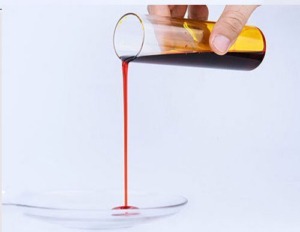Lung cancer is the leading cause of cancer-related death worldwide. In contrast, the 5-year relative survival rate for all stages of lung cancer is approximately 21%, with the major histological subtype being non-small-cell lung cancer (NSCLC). The gold standard for NSCLC treatment remains the cisplatin-based chemotherapy regimen. However, prolonged use of chemotherapeutic agents might increase toxicities with a nominal survival rate. Compared with conventional cancer treatment, traditional medicine is considered a poly-pharmacy with broad-spectrum pharmacological effects through multiple ingredients due to influencing various targets.
Seabuckthorn (Hippophae rhamnoides L.) is naturally distributed in Asia and Europe and has been used in traditional medicine for centuries for its high nutritional and medicinal properties. This fruit contains naturally occurring antioxidants, including ascorbic acid, tocopherols, carotenoids, and flavonoids, as well as proteins, vitamins, minerals, lipids (primarily unsaturated fatty acids), sugars, organic acids, and phytosterols. Different parts of Seabuckthorn, particularly the berries, have been mainly used in traditional medical practice. Studies on animals and humans suggest that Seabuckthorn juice, extracts, oils, seed, and leaves may elicit beneficiary effects on health, including cardioprotective, hepatoprotective, anti-atherogenic, antioxidant, anticancer, immunomodulatory, antibacterial, antiviral, wound healing, and anti-inflammatory properties.
Natural products are an excellent unexplored source for novel antitumor synergizing agents due to several factors, including unmet therapeutic needs in NSCLC, medicinal plants’ diversity, and low toxicity risk. Previously Seabuckthorn berry was reported for its bioactive compounds with anticancer properties. Various Seabuckthorn extracts were compared for their antiproliferative and apoptotic effects on human colon cancer (Caco-2) and human liver cancer cells (Hep G2).
 However, its synergizing potential combined with the conventional chemotherapeutic agent DTX still needs to be discovered. Here, for the first time, we reported Seabuckthorn pulp oil’s antiproliferative and synergizing properties against two NSCLC cells and possible mechanisms of action. We observed that seabuckthorn pulp oil inhibited A549 and H23 cell viability when treated alone in a dose- and time-dependent manner at comparably higher concentrations than those medicinal herbs reported to possess antitumor properties as a single agent.
However, its synergizing potential combined with the conventional chemotherapeutic agent DTX still needs to be discovered. Here, for the first time, we reported Seabuckthorn pulp oil’s antiproliferative and synergizing properties against two NSCLC cells and possible mechanisms of action. We observed that seabuckthorn pulp oil inhibited A549 and H23 cell viability when treated alone in a dose- and time-dependent manner at comparably higher concentrations than those medicinal herbs reported to possess antitumor properties as a single agent.
However, when seabuckthorn pulp oil is combined with DTX at a minimal dose, which alone caused almost no remarkable cytotoxicity, the two-drug combination demonstrates CI indexes equivalent to moderate synergy-to-synergy effects. However, these antiproliferative and synergizing activities of seabuckthorn pulp oil were not correlated with the direct kill of cells and did not involve a significant activation of caspase-3. Thus, further studies aimed to evaluate whether inhibition of cancer cell proliferation is due to irreversible cell-cycle arrest. The microscopic analysis of Liu’s stain showed the morphological changes, such as cell enlargement, flattening, and abundant cytoplasmic vacuoles in cells treated with seabuckthorn pulp oil and DTX for 24 h relative to control cells, which more possibly indicates the senescence and autophagy. Enlarged cell size, a flattened shape, vacuolization, resistance to apoptosis, cyclin D1 depletion, and senescence-associated β galactosidase (SA-β-gal) activity are all hallmarks of senescence, which was constant with our data. Seabuckthorn pulp oil induced G1 phase arrest at cell cycle analysis and activated cellular senescence indicator biomarker expression of Senescence-associated-β-Galactosidase (SA-β-Gal).
Here, the SA- β-gal assay showed that seabuckthorn pulp oil induced A549 and H23 cell senescence even more in combined groups than in single-agent groups. Similar to our observation, scientists used the juices of thirteen different berries and revealed that the inhibition of cancer cell proliferation by berry juices did not involve caspase-dependent apoptosis but appeared to induce a permanent cell-cycle arrest, as evidenced by decreased expression of cell-cycle-associated proteins, such as cdk4, cdk6, cyclin D1, and cyclin D3. This is the first report showing that seabuckthorn pulp oil induces senescence in NSCLC cells when treated alone or in combination with DTX.
We failed to observe the apparent induction of cell apoptosis after exposure to seabuckthorn pulp oil solely or merged with DTX, suggesting that apoptosis may not play a predominant role in the cytotoxicity of the combination treatment. Instead, our research data further observed that autophagic cell death is required for the cytotoxic effects of the combination group. Although autophagy was initially described as a protection mechanism in cancer cells against various stress inducers and led to the debate about its role in cancer therapy, excessive autophagy could be identified as another mode of cell death.
In the present study, Liu’s stain microscopic observation of A549, H23 cells revealed the presence of cytoplasmic vacuolization treated with 1 mg/mL of seabuckthorn pulp oil and 0.1 nM of DTX for 24 h. LC3 is another reliable marker of autophagosomes. During autophagy, the cytosolic form of LC3 (LC3-I) is conjugated to phosphatidylethanolamine to form LC3-phosphatidylethanolamine conjugate (LC3-II), which is recruited to autophagosomal membranes.
Here, Western blot and immunohistochemistry analysis of LC3 revealed a significant overexpression and formation of LC3 puncta upon treatment with seabuckthorn pulp oil and DTX co-treatment group after 24 h. The MAPK is a downstream signaling pathway of ROS and plays a pivotal role in inducing apoptosis and autophagy. Many studies have suggested that ROS generation might cause cell death by activating MAPK. The former research proposed that although moderate or short-term activated MEK/ERK signaling molecules might inhibit cell autophagy, sustained and long-term activation could induce autophagy. Accordingly, our study demonstrated that seabuckthorn pulp oil exerted the synergizing activity of conventional chemotherapeutic agent DTX is associated with induction of autophagy via sustained activation of ERK that ultimately led to cell death.
In contrast, another study’s results demonstrated that the antitumor activity of Seabuckthorn could be attributed to particularly phenolic compounds such as flavonoids, including kaempferol, quercetin, and isorhamnetin, where isorhamnetin possesses anti-proliferation activity on lung cancer cells in vitro through induction of apoptosis by the down-regulation of oncogenes and up-regulation of apoptotic genes. Moreover, the anticancer effects of different berries extracts, including Seabuckthorn, were studied on the viability of HT29 and MCF-7 cancer cells in correlation with some carotenoid and vitamin C levels. Intriguingly, when the ascorbate standard was exposed alone, it did not show cancer cell cytotoxicity in the same way, suggesting a synergistic activity of vitamin C and other components of the extracts.
Initially, our project aimed to utilize seabuckthorn pulp oil extract to show the possible drug synergizing activity in combination treatment regimens. Thus, at this stage, we could only predict the possibility of some active components possessing chemosensitization properties in NSCLC. We highlight two significant constituents, deoxycholic acid, and lobeline, identified in seabuckthorn pulp oil by an LC-QToF mass spectrometer analysis. They were reported to induce autophagy and chemosensitization effects previously. The former study showed that when Barrett’s esophagus (BE) cells were exposed to deoxycholic acid (DCA), Beclin-1 expression was increased along with pronounced induction of autophagy observed by electron microscopy and immunohistochemistry analysis of the GFP-LC3-positive puncta pattern. Moreover, a piperidine alkaloid from Lobelia inflata, lobeline, showed the potential to reverse multidrug resistance (MDR) and sensitize drug-resistant tumor cells to doxorubicin by inhibiting P-GP activity at non-toxic concentrations.
Seabuckthorn pulp oil is a promising extract containing many dietary and medicinal compounds with a potentially beneficial role in human health. Moreover, the results support that a minimal dose of chemo drug (DTX) can significantly inhibit cancer cell viability when combined with seabuckthorn pulp oil. Although different from traditional Western pharmaceutical research, this study failed to find a single component with an exact active action but only found some active ingredients reported in the literature. However, this study points out that daily consumable functional foods, such as seabuckthorn pulp oil, can provide pharmacological effects. Studies to elucidate these functional foods’ bioactive compounds are sufficient as a paradigm for modernizing diets to treat malignant tumors.

Leave A Comment